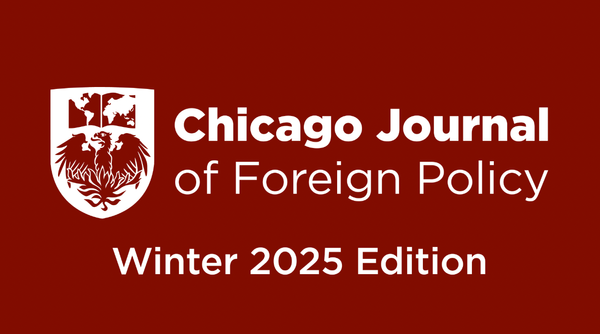Hegemony and Emerging World Multipolarity: Analyzing the Global Impacts of One Belt One Road

By Tayson Reese, University of Chicago
Introduction
On September 7, 2013, at Nazarbayev University In Kazakhstan, Xi Xinping, the President of the People’s Republic of China (PRC), general secretary of the Communist Party of China (CCP), and essentially the preeminent leader of modern China, announced the Chinese government’s intentions to commence a sweeping set of foreign infrastructure development projects entitled One Belt One Road, commonly referred to as the Belt and Road Initiative.1 This complex economic development plan and foreign relations strategy is “arguably one of the largest development plans in modern history” and corresponds with significant shifts in contemporary China’s internal leadership direction, domestic economic conditions, global power, and international relationship posturing.2 As such, analyzing the external material consequences and internal political impetus of the Belt and Road Initiative offers profound insights into modern China’s often opaque political and economic landscape, Xi Jinping’s personal political ambitions, the geopolitical standings of the world’s second most populous and most economically productive nation, and the resultant global distribution of power. Furthermore, analysis of the Belt and Road
Initiative might lead to additional insights into the potential future course of international politics and novel world economic paradigms.3
Context
The Belt and Road Initiative consists of two interlocking infrastructure development policies. The first component is the Silk Road Economic Belt, which aims to connect China to Western Europe through the construction of land-based infrastructure projects, such as roads, railroads, and pipelines. This route commences in China’s hitherto economically undeveloped western Xinjiang Uyghur Autonomous Region and travels through Central Asia, Western Asia, Turkey, Russia, and Eastern Europe, eventually terminating in the Netherlands and Italy. The second component is the 21st-Century Maritime Silk Road, which similarly endeavors to link China’s Eastern Coastal manufacturing hubs to Western Europe by sea through the construction of ports and other naval infrastructure. This route passes through the South China Sea, the Strait of Malacca, the Indian Ocean, the Red Sea, Bab-el-Mandeb, the Suez Canal, and the Mediterranean Sea and is supported by infrastructure in proximate states such as Vietnam, Indonesia, India, Sri Lanka, Kenya, and Greece. Overall, the Belt and Road Initiative is believed by China scholars to involve roughly sixty nations and could encompass up to 70% of the world’s population, 55% of the world’s gross national product, and 75% of proven energy reserves.4, 5
Given the massive scope of this development policy, large segments of China’s society, government, and economy have been mobilized toward this end. The Chinese state, from the central national government level to local administrations, has devoted significant effort and resources toward the Belt and Road Initiative, with almost every province having created its own specific policy plan to support the overall national development project. Academic institutions, which arguably could be categorized as organs of the Chinese state, have similarly been employed in furtherance of the Belt and Road Initiative.6 Lastly, state-owned economic institutions have been employed by the Chinese state to fund the Belt and Road Initiative, with novel banks and lending practices being established to support the massive movement of capital, on the order of hundreds of billions of dollars, necessary for large-scale infrastructure projects. For example, on December 29, 2014, the Chinese government created the Silk Road Fund and devoted $40 billion and RMB 100 billion of capital toward Belt and Road infrastructure projects.7 Additionally, in June 2015, the Chinese government created the Asian Infrastructure Investment Bank to fund the Belt and Road Initiative.8 The bank, which began operations in January 2016, has grown to include 109 member nations, with several more nations potentially joining, and $100 billion in capital.9 Given the grandiose ambitions of the Belt and Road Initiative and the monumental social energy and material investment devoted toward its completion, China scholars have identified the Belt and Road Initiative as Xi Jinping and the broader PRC’s keystone economic and foreign policy.
Impetuses for the Belt and Road Initiative
While determining the underlying intentions of contemporary Chinese policies is a daunting undertaking given the lack of transparency into China’s internal government workings and decision-making, China scholars seem to concur on the existence of several key dilemmas that the Belt and Road Initiative aims to address. These considerations are mostly economic, though scholars have not yet concurred on whether the Belt and Road Initiative is best understood as primarily driven by economic, a mix of geostrategy and economic, or principally geostrategic concerns.10
Firstly, the Belt and Road Initiative aims to ameliorate China’s domestic economic inequality between its eastern coastal regions, such as Shanghai, and its western interior, such as Xinjiang. The Chinese government has attempted to equalize its economic disparity, which amounts to as much as a fivefold discrepancy in individual citizen’s wealth, for over two decades through policies of investment and the direction of state-owned industry. However, these measures have largely failed to increase the relative wealth of China’s western provinces; China’s western provinces made up 17.1% of total national GDP in 2000 and only 18.7% by 2010.11 As such, the Chinese government has positioned the Belt and Road Initiative as a novel solution to its regional economic inequality. Beijing posits that the Belt and Road Initiative will lead to more comprehensive economic integration with its western provinces and that this heightened integration will succeed in lessening income inequality where previous development programs have failed.
This problem of uneven economic development in China’s western land-locked regions is also closely linked to the Chinese government's ongoing attempts to address security concerns in the Xinjiang Uyghur Autonomous. Since the 1990s, the Chinese government has attempted to combat terrorism, separatism, and radical Islamism among Xinjiang’s Uyghur population, a recognized ethnic minority that practices Islam and speaks the Turkic Uyghur language. The Chinese regime views this separatism, and indeed any threats to its current sovereignty and borders, as an intolerable existential crisis.12 However, similar to the Chinese government’s attempts to solve income inequality prior to the Belt and Road Initiative, China was largely unsuccessful in addressing these security challenges with interethnic violence and resentment eventually coming to a breaking point during the 2009 Ürümqi Riots, which led to at least 1,400 arrests and 197 deaths.13 The Chinese state asserts that the root cause of separatism and interethnic tensions in Xinjiang is poverty due to said economic underdevelopment and income inequality. Thus, the Chinese state asserts that the Belt and Road Initiative, by increasing economic integration and equalizing economic prosperity, will simultaneously solve its security problems in Xinjiang.14
Beijing has additionally advanced the Belt and Road Initiative as the solution to other aspects of China’s overall economic precarity, such as overcapacity and energy insecurity. Overcapacity, which results from excess production of commodities than market demand, has heavily affected China’s heavy industry sector and has led to decreasing rates of profits, placing strain on China’s overall economic health. As such, the Belt and Road Initiative’s numerous domestic and international infrastructure projects are intended to increase demand for Chinese industrial and construction products, thus addressing overcapacity.15 The Belt and Road Initiative is also intended to reinforce China’s energy procurement, which has both economic and geostrategic implications. Specifically, the Chinese state hopes that the Belt and Road Initiative will solve its “Malacca Dilemma,” which results from China’s dependence on energy shipments through the Strait of Malacca and the South China Sea. By constructing gas pipelines from Russia and Central Asia, ports in South and Southeast Asia, and other infrastructure to support international energy trade, China hopes to avert a potential energy crisis and resultant economic disaster due to organic supply chain disruptions or intentional military antagonism toward energy shipments.16
Lastly, the Belt and Road Initiative is also likely driven by several purely geopolitical goals for the Chinese regime. Indeed, some China scholars posit that the Belt and Road Initiative is best characterized as an attempt by the Chinese regime to establish itself as the regional hegemon in East, Southeast, and Central Asia, with economic gains for China as merely secondary to the primary goal of gaining geopolitical power.17 Some analysts have asserted that the Belt and Road Initiative represents a fundamental shift from China’s previous international relations strategy of patience, as represented by Deng Xiaoping’s policy of “hide your strength and bide your time,” towards a more proactive and confrontational posturing on the world stage under the leadership of Xi Jinping.18 Some scholars posit that the Belt and Road Initiative is merely an economic incentive for neighboring states, and even nations as far from China as Greece, to allow preeminence of China’s state, economy, and military at the expense of the national security interests of the United States and even the nations participating in the Belt and Road Initiative.19 This has led some China scholars, often Western analysts, to warn that the Belt and Road Initiative merely represents the tip of the spear of the Chinese government’s broader intentions to unseat the United States as the global superpower and create a multipolar world order or even to supplant the United States as world hegemon with other nations as merely subservient to and dependent on China.20 However, it is important to note that this evaluation of the Belt and Road Initiative as solely a geopolitical power play runs contrary to China’s rhetoric surrounding the Belt and Road Initiative. Indeed, in March 2015, Foreign Minister Wang Yi stressed that the purpose of the Belt and Road Initiative is solely to promote “inclusive cooperation,” “peace,” and “friendship” rather than a zero-sum “Cold War mentality” of an oppositional power struggle.21 Regardless of China’s true intentions, the immense resources and political clout being devoted to the Belt and Road Initiative serve as powerful incentives and potential levers for the Chinese government to coerce participating nations and tilt global politics towards Chinese hegemony.
Evaluation and Conclusion
Given the ongoing nature of the Belt and Road Initiative, it is not yet clear whether this policy will yield desired economic boons and potentially desired geopolitical advantages for China. Indeed, the Belt and Road Initiative faces several fundamental economic and political challenges, both domestically and internationally, which the Chinese Communist Party will have to address for its development plan to succeed. Firstly, the call for immense movements of capital and investments necessary to fund the multitude of infrastructure projects of the Belt and Road Initiative faces challenges from a slowing financial sector in China, which has grown increasingly risk-averse and cautious due to anti-corruption measures taken by the Chinese state under Xi Jinping. Secondly, many of the nations in which Beijing aims to invest have poor credit and weak economies, further increasing Chinese financial institutions’ reluctance and cautiousness. Lastly, and perhaps most essentially, the Belt and Road Initiative has increased suspicion of China’s intentions, with some nations and analysts decrying the policy as infringing upon the economic and military sovereignty of participating states.22,23 Regardless of whether China is able to resolve these challenges and the Belt and Road Initiative succeeds or fails, the massive and sprawling nature of the project undoubtedly indicates the immense potential of the Belt and Road Initiative to fundamentally change the reality of China’s domestic economic situation and define international relations in an increasingly multipolar and uncertain world.
Bibliography
1 Tzogopoulos, George N. “The ‘Belt and Road’ Initiative.” Greece, Israel, and China’s “Belt and Road” Initiative. Begin-Sadat Center for Strategic Studies, 2017. https://www.jstor.org/stable/resrep04721.5.
2 Cai, Peter. “Understanding China’s Belt and Road Initiative.” Lowy Institute for International Policy, 2017. https://www.jstor.org/stable/resrep10136.
3 Ratner, Ely, and Maurice R. Greenberg. “Geostrategic and Military Drivers and Implications of the Belt and Road Initiative.” Council on Foreign Relations, 2018. https://www.jstor.org/stable/resrep17363.
4 Meidan, Michal, and Luke Patey. “The Challenges Facing China’s Belt and Road Initiative.” Danish Institute for International Studies, 2016. https://www.jstor.org/stable/resrep13112.
5 Tzogopoulos, George N. “The ‘Belt and Road’ Initiative.” Greece, Israel, and China’s “Belt and Road” Initiative. Begin-Sadat Center for Strategic Studies, 2017. https://www.jstor.org/stable/resrep04721.5.
6 Cai, “Understanding China’s Belt and Road Initiative.”
7 “Company Profile,” n.d. http://www.silkroadfund.com.cn/enweb/gywm/gsgk/gsjj/index.html.
8 Meidan and Patey, “The Challenges Facing China’s Belt and Road Initiative.”
9 “Members of the Bank,” n.d. https://www.aiib.org/en/about-aiib/governance/members-of-bank/index.html.
10 Cai, “Understanding China’s Belt and Road Initiative.”
11Ibid
12 Ibid
13 “Urumqi Riot Handled ‘Decisively, Properly,’” n.d.
https://www.chinadaily.com.cn/china/2009-07/18/content_8444365.htm.
14 Cai, “Understanding China’s Belt and Road Initiative.”
15 Tzogopoulos, “The ‘Belt and Road’ Initiative.”
16 Ratner and Greenberg, “Geostrategic and Military Drivers and Implications of the Belt and Road Initiative.”17 Mobley, “The Belt and Road Initiative.”
18 Cai, “Understanding China’s Belt and Road Initiative.”
19 Ratner and Greenberg, “Geostrategic and Military Drivers and Implications of the Belt and Road Initiative.” 20 Tzogopoulos, “The ‘Belt and Road’ Initiative.”
21 Ibid
22 Meidan and Patey, “The Challenges Facing China’s Belt and Road Initiative.”
23 Ratner and Greenberg, “Geostrategic and Military Drivers and Implications of the Belt and Road Initiative.”





